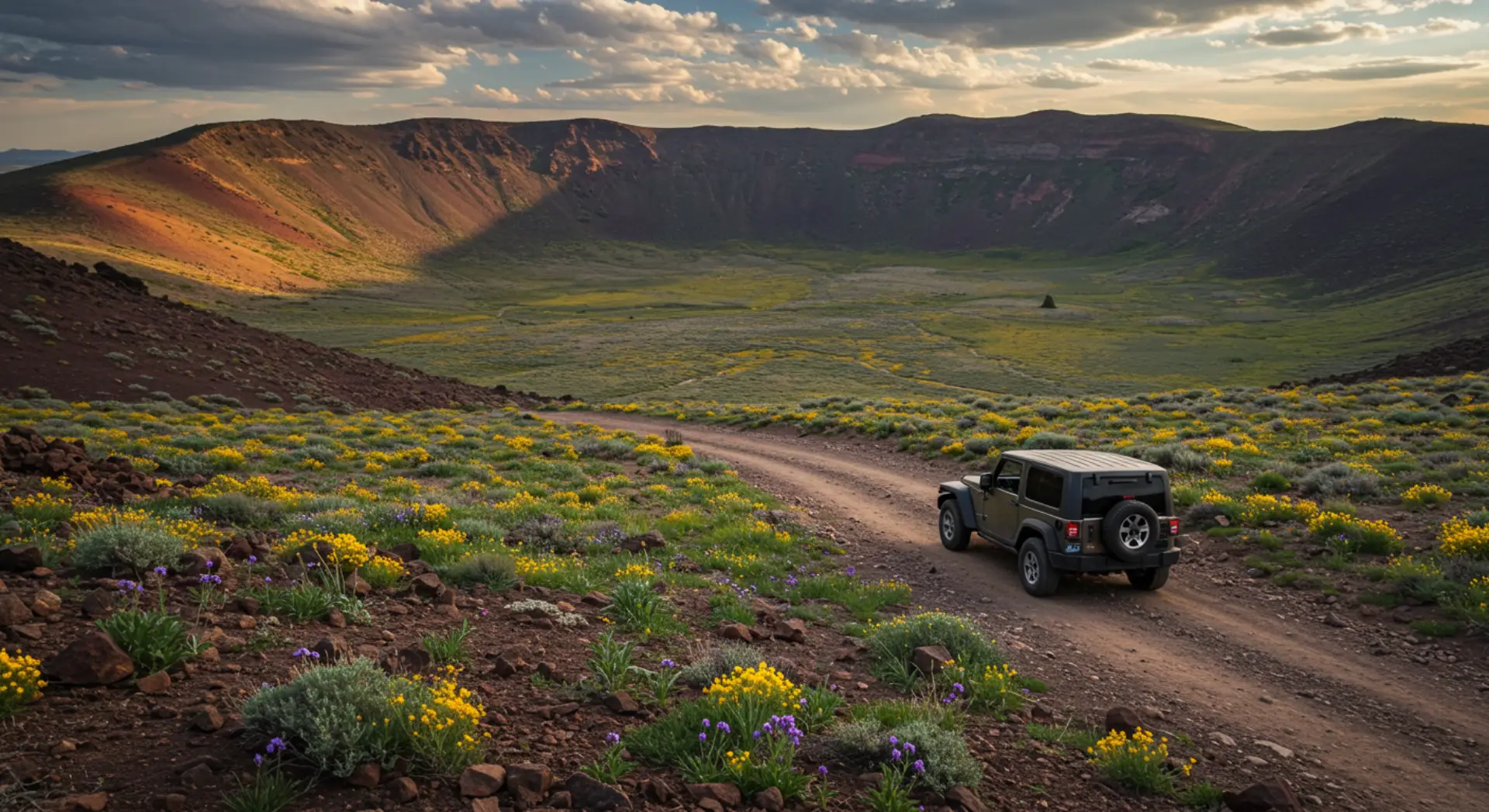
Valles Caldera Jeep Tours: Exploring New Mexico's Hidden Volcanic Wonder
Valles Caldera: New Mexico's Hidden Volcanic Adventure That Destroys Tourist Expectations
Here's what most people never discover about Valles Caldera: this isn't just another southwestern desert drive or generic mountain scenic route. At 89,000 acres of protected volcanic landscape in northern New Mexico, Valles Caldera National Preserve represents one of the most geologically significant and visually stunning destinations accessible by 4x4 vehicle—yet remains virtually unknown to the recreational off-road community that crowds Colorado and Utah while missing this extraordinary volcanic terrain entirely.
Valles Caldera formed 1.25 million years ago when a massive volcanic eruption created a caldera 13 miles across, leaving behind geothermal features, high-altitude grasslands, and mountain peaks that exist nowhere else in the Southwest. While everyone else fights for permits and parking at overrun national parks, Valles Caldera sits quietly offering genuine wilderness access, technical driving challenges, and geological education that redefine what high-desert adventure can actually deliver.
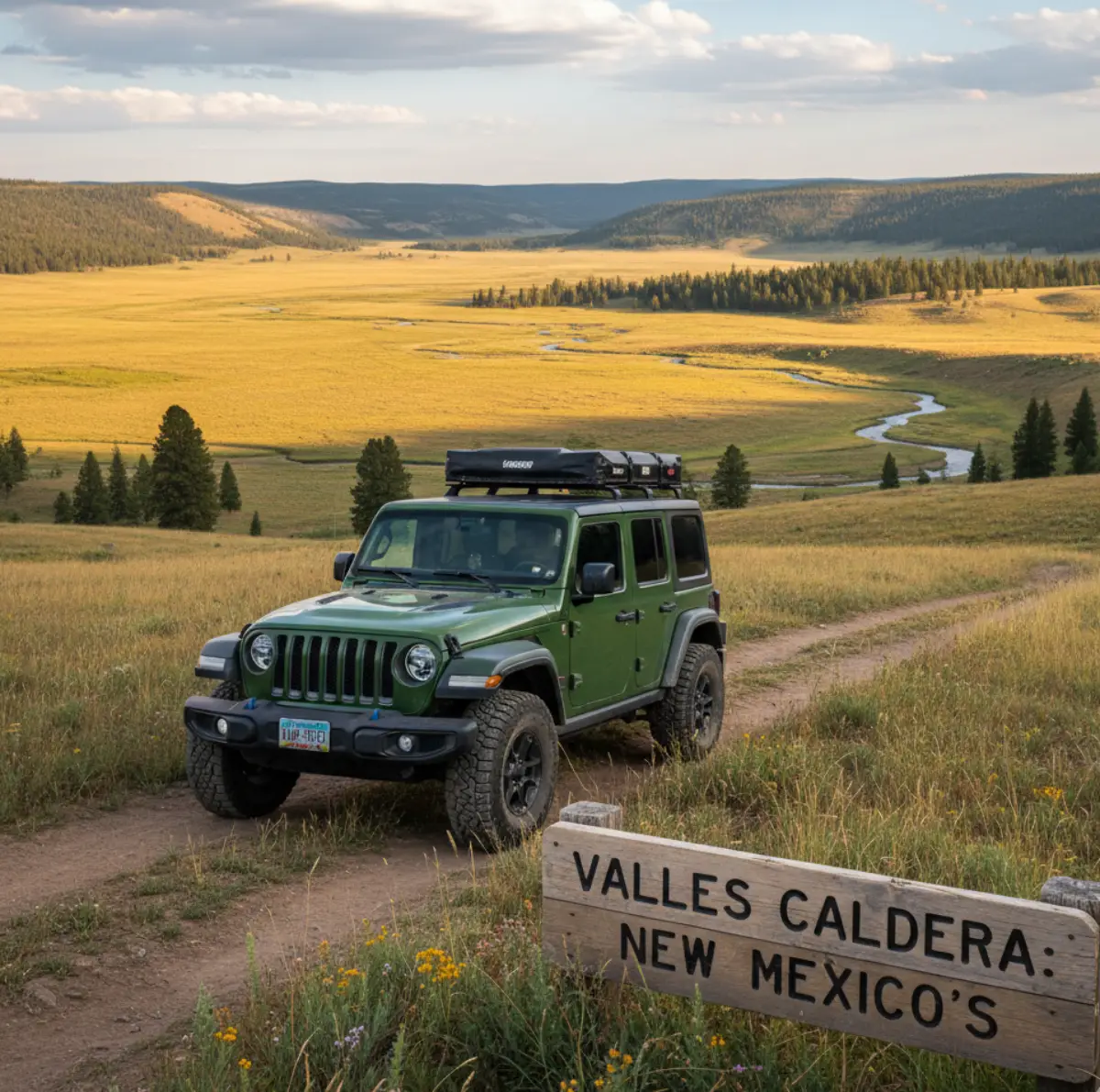
Most people experience exactly 0% of what Valles Caldera offers because they've never heard of it, assume New Mexico doesn't contain serious mountain terrain, or don't understand that this volcanic landscape requires different preparation and equipment than typical southwestern adventures. The difference between casual tourists seeking scenic drives and adventurers who understand geological significance shapes every aspect of how you approach this remarkable destination.
Why Valles Caldera Operates in a Different Category
Valles Caldera's volcanic origin creates terrain that doesn't exist anywhere else accessible by vehicle: high-altitude grasslands surrounded by volcanic peaks, geothermal features including hot springs and fumaroles, and forest ecosystems that transition from high desert to montane conditions within a single route. The 1.25-million-year geological timeline creates landscape features that make typical southwestern red rock scenery seem repetitive by comparison.
What makes Valles Caldera unique among southwestern destinations:
Volcanic caldera terrain accessible nowhere else by 4x4 vehicle
Elevations ranging from 8,000 to 11,254 feet with corresponding ecosystem diversity
Active geothermal features including natural hot springs and steam vents
Wildlife populations including elk herds numbering in the thousands
Protected wilderness status with controlled access that eliminates crowding
Technical driving challenges combined with educational opportunities
The geological reality: Valles Caldera represents active geological processes on a scale that dwarfs human timeframes. The landscape continues evolving through geothermal activity, seasonal changes, and volcanic forces that operate on geological time scales, creating environments that feel both ancient and actively changing.
The Elevation Advantage That Changes Everything
Valles Caldera's elevation profile creates microclimates and terrain challenges that most southwestern adventures never approach. At 8,000+ feet elevation throughout most of the caldera, with peaks exceeding 11,000 feet, this destination operates on mountain physics rather than desert principles, demanding different preparation, equipment, and respect for altitude effects that catch unprepared visitors completely off-guard.
High-Altitude Performance Effects
Engine performance at Valles Caldera elevations:
Naturally aspirated engines lose 25-30% power compared to sea level
Cooling system demands increase significantly during sustained climbs
Fuel efficiency decreases due to rich mixture compensation at altitude
Transmission stress increases on mountain grades that caldera terrain creates
Human performance considerations at 8,000+ feet:
Noticeable fatigue increase for sea-level residents within hours of arrival
Reaction time and decision-making affected by reduced oxygen availability
Physical exertion becomes more challenging during vehicle recovery or hiking
Dehydration occurs faster in high-altitude, low-humidity conditions
Weather Patterns That Demand Respect
Valles Caldera's high elevation and exposed terrain create weather patterns that change dramatically based on seasonal timing, daily heating cycles, and storm systems that develop rapidly above treeline. Understanding these patterns determines the difference between successful adventures and dangerous situations that develop faster than unprepared visitors can adapt.
Seasonal variations in Valles Caldera conditions:
Summer season (June-September): Optimal access with afternoon thunderstorms that develop rapidly and create lightning hazards on exposed terrain. Morning starts provide stable conditions before daily heating triggers storm development.
Fall conditions (September-November): Spectacular autumn colors with increasingly unpredictable weather as winter patterns begin. Early snow can close high-elevation routes suddenly while lower areas remain accessible.
Winter access (December-March): Limited to lower elevations with 4x4 capability required for snow and ice conditions that persist longer at altitude. Specialized equipment and avalanche awareness necessary for high-elevation attempts.
Spring emergence (April-May): Mud season with mixed conditions ranging from snow at elevation to dusty conditions in protected areas. Wildlife activity increases as animals emerge from winter survival patterns.
Trail Systems That Showcase Volcanic Terrain
Valles Caldera's trail system provides progressive access to increasingly spectacular volcanic features while building skills through terrain that transitions from moderate forest roads to technical mountain routes requiring advanced 4x4 capability. Unlike typical trail systems designed purely for recreation, Valles Caldera routes developed from historical ranch roads and geological survey access, creating authentic backcountry experiences rather than manufactured adventure trails.
Valle Grande: The Heart of the Caldera
Valle Grande represents the main caldera floor—a massive grassland valley surrounded by volcanic peaks that demonstrates the scale of the geological forces that created this landscape. The driving route across Valle Grande provides access to geothermal features, wildlife viewing, and perspectives that showcase the caldera's circular formation from ground level.
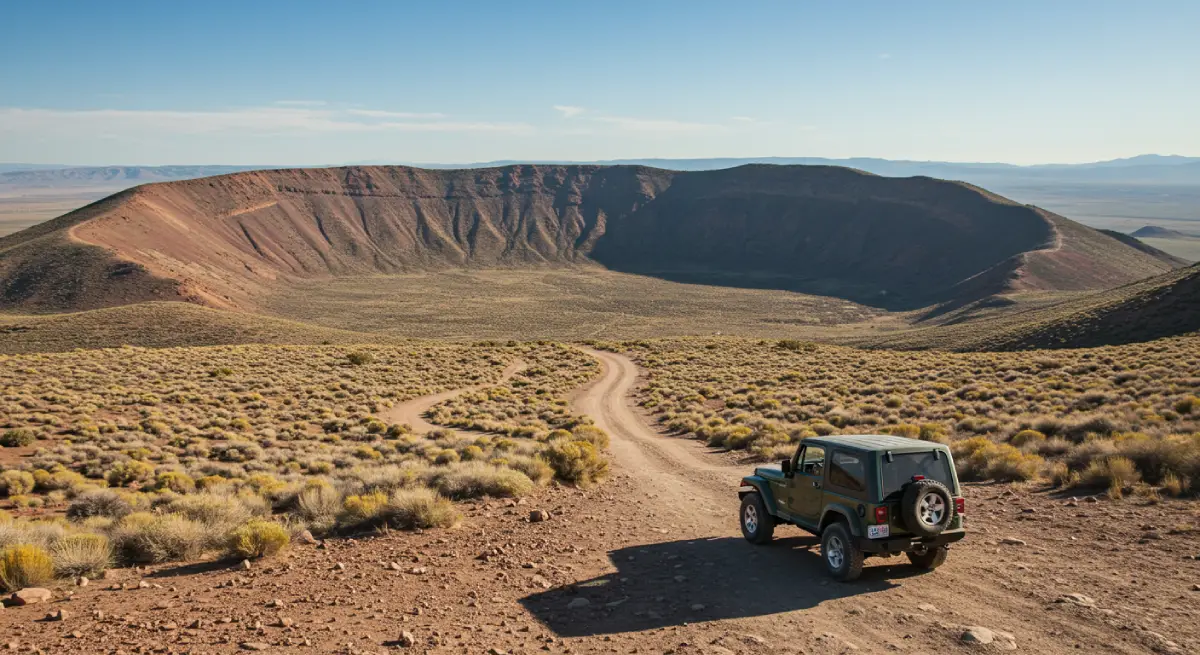
Valle Grande experience characteristics:
Expansive grassland driving across the caldera floor
Wildlife viewing opportunities including elk herds and diverse bird species
Geological interpretation sites explaining volcanic formation processes
Photography opportunities showcasing the scale of volcanic landscape
Access to geothermal features unique to this volcanic environment
Banco Bonito Obsidian Flow
The Banco Bonito area provides access to recent obsidian flows that demonstrate ongoing volcanic activity on geological timescales. This route combines moderate technical driving with educational opportunities about volcanic glass formation and the continuing geological processes that shape the caldera landscape.
Technical and educational highlights:
Obsidian formations accessible by high-clearance vehicles
Geological interpretation of recent volcanic activity (within last 60,000 years)
Technical driving challenges through volcanic rock terrain
Educational opportunities about Native American obsidian tool-making
Unique photographic subjects unavailable elsewhere in the Southwest
Redondo Peak Access Routes
Redondo Peak, the highest point in the caldera at 11,254 feet, offers technical driving routes that climb through ecosystem transitions from high grassland to montane forest to alpine conditions. These routes demand 4x4 capability while rewarding successful navigation with panoramic views across the entire caldera and surrounding mountain ranges.
High-elevation route characteristics:
Technical mountain driving requiring low-range gearing and adequate ground clearance
Ecosystem transitions demonstrating elevation-based climate zones
Panoramic summit views across the entire 13-mile caldera diameter
Alpine conditions that exist rarely in southwestern high-elevation terrain
Weather exposure that demands preparation for rapid condition changes
Wildlife Encounters That Define the Experience
Valles Caldera supports wildlife populations that exist in few other accessible locations, particularly elk herds that number in the thousands and demonstrate natural behavior patterns undisturbed by typical tourist pressure. The combination of protected status, diverse ecosystems, and limited human access creates wildlife viewing opportunities that provide education about natural systems rather than just photographic subjects.
Elk Population Dynamics
The caldera's elk population represents one of the largest herds in New Mexico, with seasonal patterns that affect both wildlife behavior and visitor access. Understanding these patterns enhances the adventure experience while ensuring responsible recreation that doesn't disrupt critical wildlife activities like breeding and winter survival.
Seasonal elk behavior patterns:
Spring calving season with increased elk visibility in grassland areas
Summer dispersal into higher elevation areas during hot weather
Fall rutting season with dramatic behavioral displays and increased activity
Winter concentration in protected valley areas with potential access restrictions
Predator-Prey Relationships
The protected status and large territory allow natural predator-prey relationships that provide educational opportunities about ecosystem balance rarely observable in smaller protected areas. Black bears, mountain lions, and coyotes interact with prey species in patterns that demonstrate natural selection pressures and habitat requirements.
Vehicle Requirements for Volcanic Terrain
Valles Caldera's unique geological composition creates driving challenges different from typical southwestern terrain. Volcanic soils, high-altitude conditions, and technical routes through forest and grassland environments demand specific vehicle capabilities that address these particular conditions rather than generic off-road modifications.
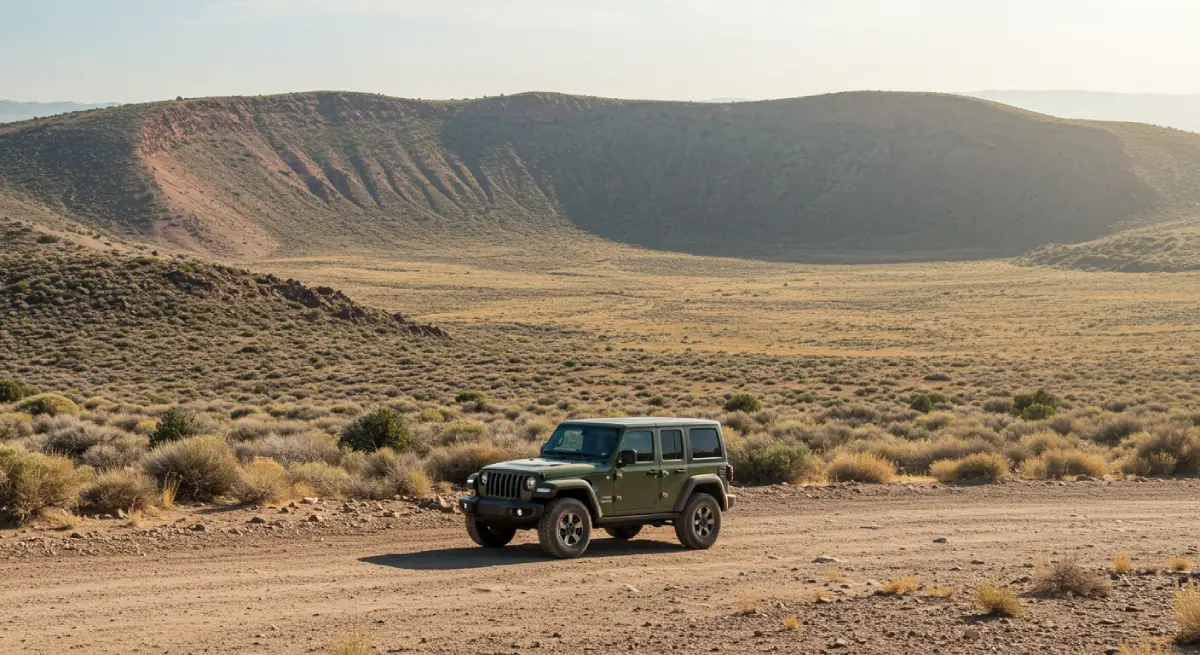
Ground Clearance for Volcanic Rock
Volcanic terrain creates unique obstacles including lava rock formations, loose volcanic soil conditions, and stream crossings through areas where volcanic activity altered natural drainage patterns. These conditions require ground clearance specifications that account for sharp volcanic rock and uneven surfaces created by geological rather than erosion processes.
Minimum clearance requirements:
9+ inches ground clearance for volcanic rock navigation
Skid plate protection for sharp volcanic material contact
Aggressive tire compounds that grip on loose volcanic soils
Adequate approach and departure angles for lava rock obstacles
High-Altitude Performance Systems
The 8,000+ foot elevation throughout most of Valles Caldera demands vehicle systems designed for sustained high-altitude operation rather than occasional mountain driving. Cooling systems, fuel delivery, and drivetrain components work harder at altitude while delivering less power, requiring modifications that many sea-level vehicles lack.
High-altitude system requirements:
Enhanced cooling capacity for sustained mountain driving at altitude
Fuel system adjustments that accommodate atmospheric pressure changes
Low-range gearing appropriate for reduced power output at elevation
Emergency recovery equipment for self-extraction in remote volcanic terrain
Traction Systems for Mixed Conditions
Valles Caldera terrain transitions between volcanic rock, high-altitude grassland, forest floor conditions, and seasonal mud or snow that require traction systems adaptable to rapidly changing surface conditions within single routes. Unlike single-environment destinations, caldera driving demands versatility over specialization.
Professional Rental Advantages for Caldera Adventures
Attempting Valles Caldera in personal vehicles creates multiple complications that professional rental services eliminate: insurance coverage limitations for remote high-altitude activities, unfamiliarity with volcanic terrain demands, and lack of local expertise about seasonal access and route conditions that change based on weather, wildlife activity, and geological monitoring requirements.
Purpose-Built Fleet for Volcanic Terrain
Cliffhanger Jeep Rentals operates vehicles specifically prepared for Valles Caldera's unique demands, with modifications that address volcanic rock conditions, high-altitude performance requirements, and emergency preparedness for remote adventures far from standard assistance or cell service coverage.
Fleet specifications for caldera adventures:
Volcanic rock protection including comprehensive skid plates and armor
High-altitude cooling systems designed for sustained mountain driving
Emergency communication equipment for areas without cell coverage
Recovery equipment positioned for self-extraction in volcanic terrain
Local Expertise About Seasonal Conditions
Current access intelligence: Professional operations maintain information about seasonal route closures, wildlife activity restrictions, and volcanic monitoring that affects access permissions and safety considerations for Valles Caldera adventures.
Route optimization: Experienced guides understand how seasonal conditions affect different routes and can recommend timing strategies that maximize access while minimizing risks associated with weather changes or wildlife conflicts.
Insurance and Remote Area Support
Personal vehicle insurance typically provides limited coverage for remote high-altitude adventures in protected areas, leaving owners responsible for expensive recovery costs when challenging volcanic terrain exceeds vehicle capabilities or when emergency situations develop far from conventional assistance.
Planning Your Valles Caldera Adventure
Successful Valles Caldera adventures require understanding the unique combination of protected area regulations, volcanic terrain challenges, and high-altitude conditions that create planning requirements different from typical southwestern destinations or standard mountain adventures.
Access Regulations and Permits
Valles Caldera National Preserve operates under specific regulations that balance public access with ecosystem protection and scientific research activities. Understanding these requirements prevents violations while ensuring access to the full range of volcanic features and terrain that make this destination rewarding for serious adventurers.
Access requirements:
Advanced reservations required for vehicle access to most caldera routes
Group size limitations that affect planning for multi-vehicle adventures
Seasonal restrictions based on wildlife activity and weather conditions
Specific route designations that determine where 4x4 vehicles are permitted
Timing Strategies for Optimal Conditions
Early season access (May-June): Spring conditions with wildflowers and active wildlife, though some high-elevation routes may remain closed due to snow or mud conditions from recent melt.
Peak season opportunities (July-September): Optimal access to all elevation levels with stable weather patterns and maximum wildlife activity, though advance reservations become more competitive.
Late season advantages (October-November): Autumn colors and cooler temperatures with reduced visitor pressure, though weather becomes increasingly unpredictable as winter approaches.
Emergency Preparedness for Remote Volcanic Terrain
Communication systems: Cell service is unreliable throughout most of Valles Caldera, making satellite communication devices essential rather than optional for groups venturing into remote volcanic terrain far from assistance.
Self-sufficiency requirements:
Navigation systems with offline mapping for areas where GPS becomes unreliable
Emergency shelter and warmth for unexpected weather changes at altitude
Water and food supplies exceeding planned duration for unexpected delays
First aid training appropriate for remote location medical emergencies
The Geological Education Advantage
Valles Caldera provides unparalleled opportunities to understand volcanic processes, ecosystem development, and geological timescales that transform recreational driving into genuine educational adventure. The combination of accessible terrain and world-class geological features creates learning opportunities that enhance appreciation while building understanding of natural systems that operate on scales larger than human experience.
Volcanic Process Interpretation
Active geothermal features throughout the caldera provide real-time demonstrations of ongoing volcanic processes that help visitors understand the forces that created this landscape and continue shaping it on geological timescales. Unlike museum displays or textbook descriptions, caldera features provide direct experience with volcanic activity.
Educational opportunities:
Geothermal features including hot springs and fumaroles that demonstrate ongoing volcanic activity
Obsidian formations that show volcanic glass creation and Native American tool-making applications
Volcanic rock formations that illustrate different eruption types and cooling processes
Ecosystem development patterns that show how life adapts to volcanic environments
Ecosystem Transition Learning
The elevation range and volcanic substrate create ecosystem transitions that demonstrate how geological processes influence biological communities over time. These relationships provide insights into natural selection, adaptation, and ecosystem development that pure scenic destinations cannot match.
Environmental Stewardship in Protected Volcanic Landscape
Valles Caldera's protected status requires recreation practices that preserve geological features, protect wildlife habitat, and maintain the pristine conditions that make this destination unique. Understanding these responsibilities ensures continued access while protecting scientific and educational values that benefit future visitors.
Geological Feature Protection
Critical protection priorities:
Avoid disturbing geological formations including obsidian flows and volcanic features
Stay on designated routes to prevent damage to fragile volcanic soils
Respect geothermal features by maintaining appropriate distances and avoiding contamination
Pack out all materials to preserve the pristine character of volcanic landscapes
Wildlife Habitat Preservation
The large elk population and diverse wildlife community depend on habitat conditions that inappropriate recreation can disrupt, particularly during critical seasonal periods like breeding and winter survival. Responsible recreation maintains the natural behavior patterns that make wildlife viewing educational rather than intrusive.
The Reality of Valles Caldera Success
Valles Caldera rewards preparation and respect while providing immediate feedback about the difference between casual scenic driving and genuine engagement with volcanic landscape that operates on geological rather than human timescales. Success requires understanding that this destination offers educational adventure through unique terrain that demands appropriate respect and preparation.
What successful caldera adventures require:
Understanding of high-altitude effects on both vehicles and human performance
Respect for volcanic terrain challenges that differ from typical southwestern conditions
Advance planning that accommodates protected area regulations and access requirements
Emergency preparedness appropriate for remote high-altitude adventures
Environmental awareness that preserves access through responsible recreation practices
Making the Commitment to Volcanic Adventure
Valles Caldera represents more than just another southwestern destination—it's an opportunity to experience active geological processes while exploring terrain that exists nowhere else accessible by 4x4 vehicle. The combination of volcanic landscape, protected wilderness status, and educational opportunities creates adventures that build understanding of natural systems while providing genuine challenges that test preparation and execution.
Building toward caldera readiness:
High-altitude driving experience that develops understanding of elevation effects
Knowledge of protected area regulations and responsible recreation practices
Vehicle preparation that addresses volcanic terrain and high-altitude performance demands
Emergency preparedness training appropriate for remote protected area adventures
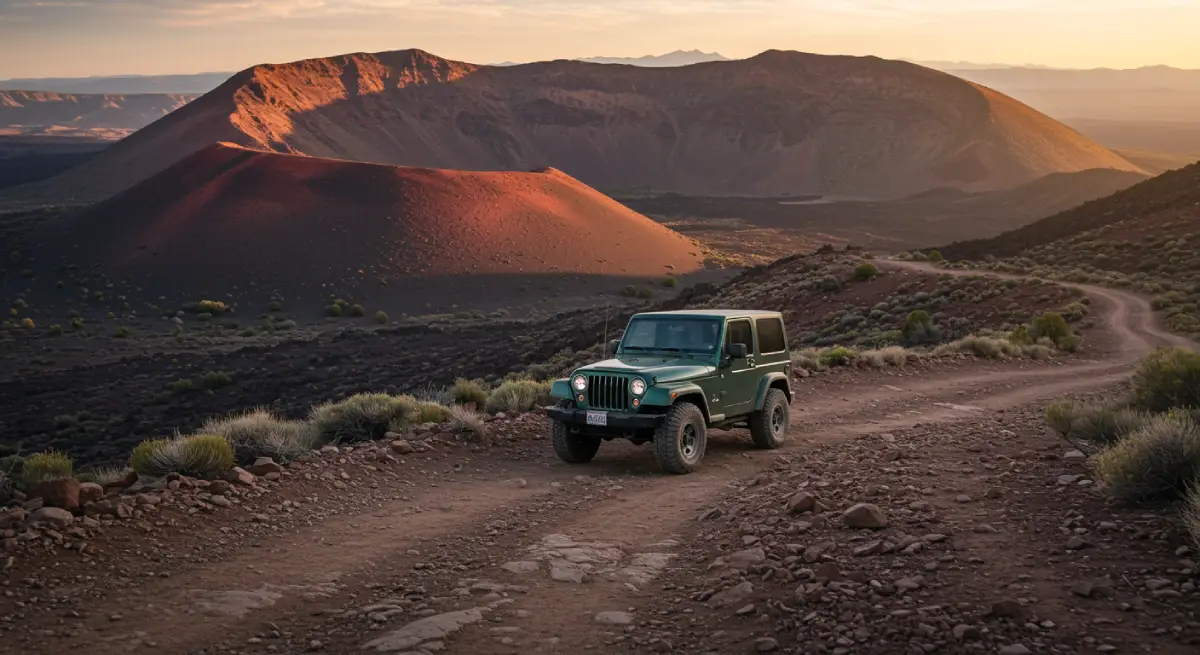
The Professional Solution: Cliffhanger Jeep Rentals
The choice between attempting Valles Caldera in personal vehicles versus partnering with professional services often determines whether the experience becomes successful education or expensive lesson in the complexity of volcanic terrain, high-altitude conditions, and protected area requirements.
Professional service advantages:
Purpose-built vehicles designed for volcanic terrain and high-altitude performance
Local expertise about access regulations and optimal timing for seasonal conditions
Emergency communication and support systems for remote protected area adventures
Insurance coverage designed for high-altitude activities in protected landscapes
The Bottom Line: Earning Access to Geological Significance
Valles Caldera doesn't care about your vehicle modifications, off-road experience, or determination level. It presents challenges that demand specific solutions while providing educational opportunities about volcanic processes and ecosystem development that operate on timescales that dwarf human planning horizons.
The geological forces that created this caldera continue operating according to physical laws that make human activities seem brief and insignificant by comparison. Whether you choose to develop personal capabilities for volcanic terrain or partner with professional services that provide proven equipment and expertise, success depends on approaching these forces with appropriate respect rather than assuming modern equipment automatically overcomes geological realities.
The most rewarding Valles Caldera experiences come from understanding geological significance while meeting contemporary challenges through appropriate preparation rather than discovering terrain limitations through expensive recovery situations in remote volcanic landscape.
Ready to explore New Mexico's hidden volcanic adventure? Cliffhanger Jeep Rentals provides the specialized vehicles, high-altitude expertise, and protected area knowledge that transform Valles Caldera from a theoretical destination into a successful geological adventure that connects you with ongoing volcanic processes spanning more than a million years.
Experience Valles Caldera with confidence through Cliffhanger Jeep Rentals—where every vehicle is prepared for challenges that separate geological education from expensive mistakes in protected volcanic terrain.
